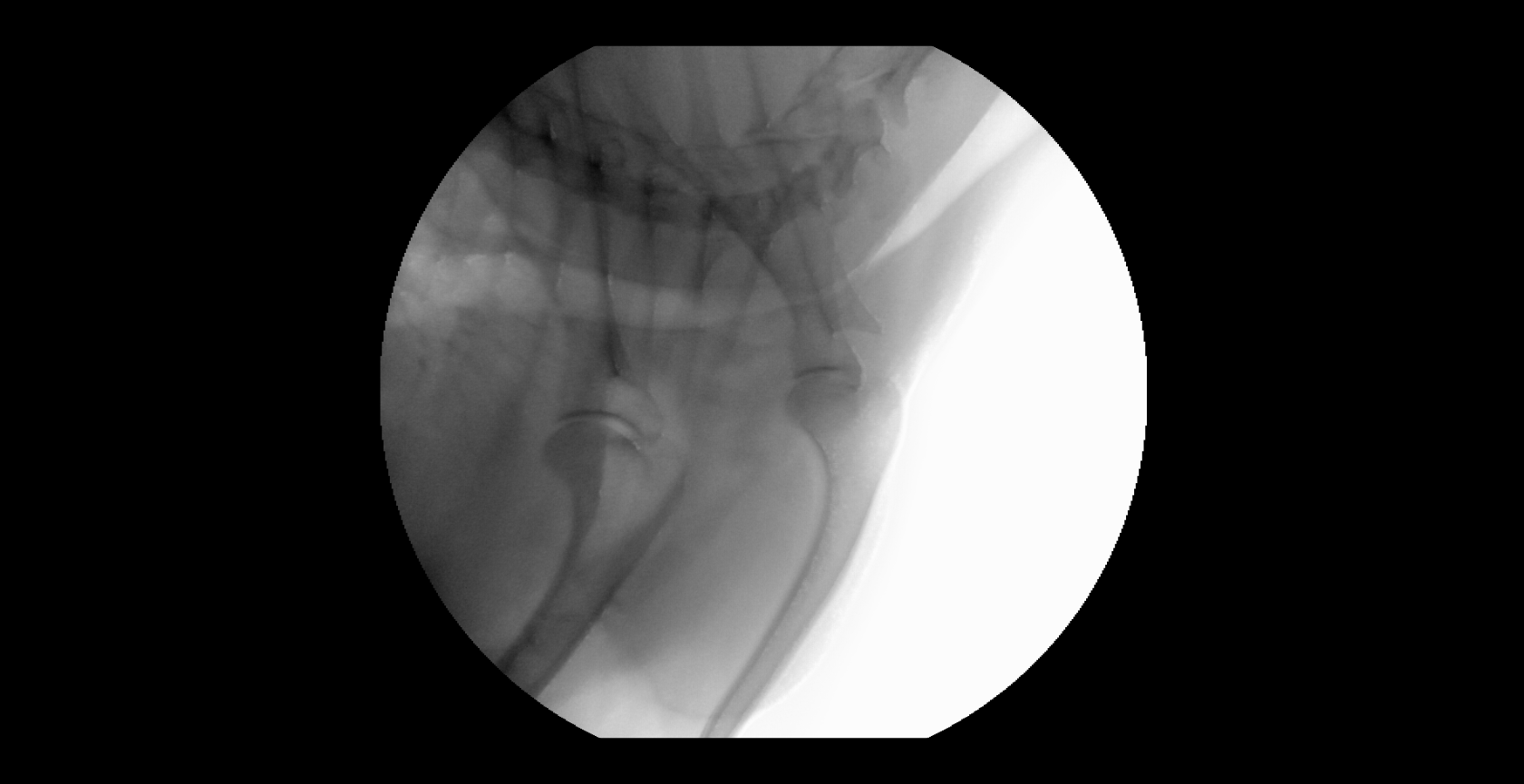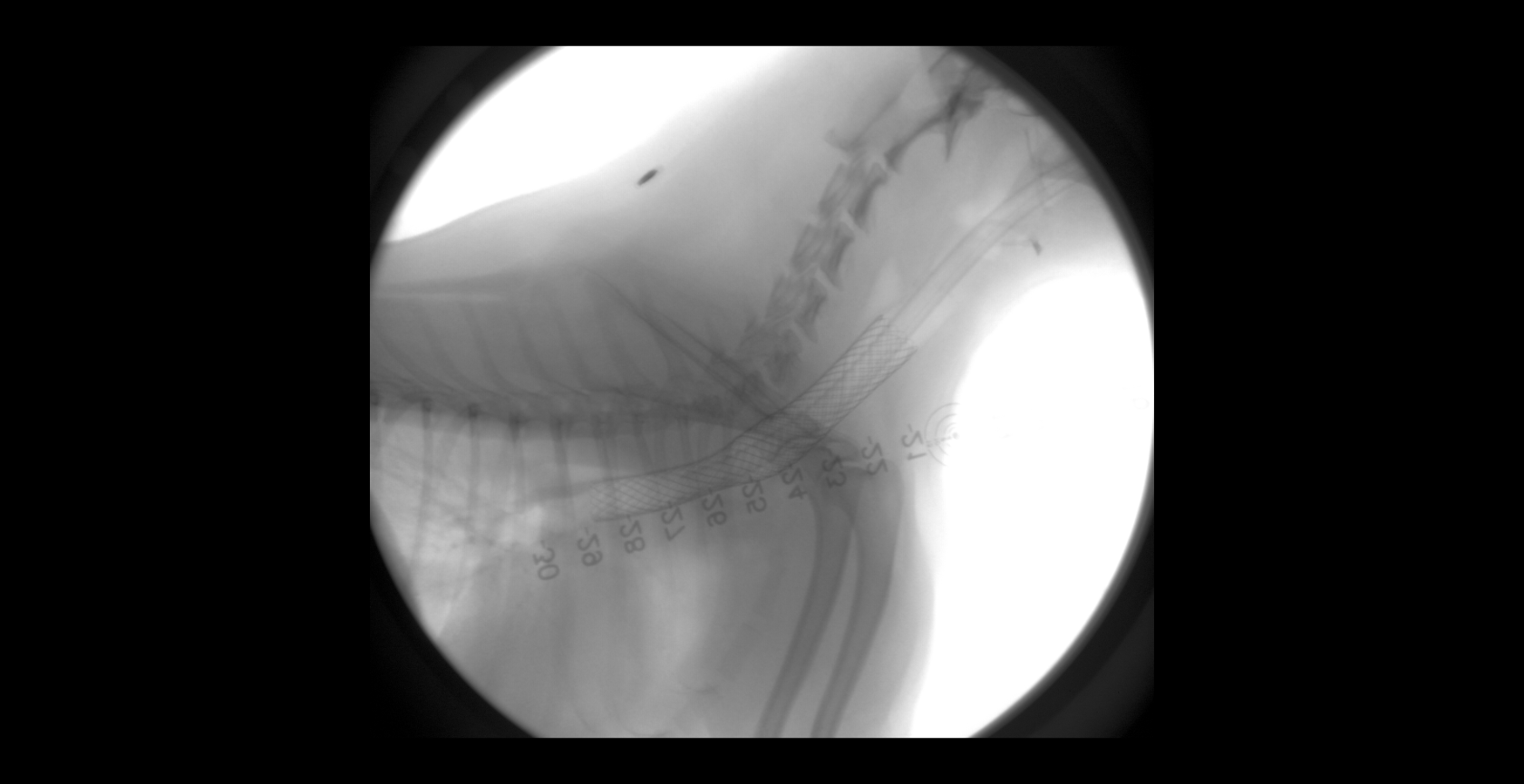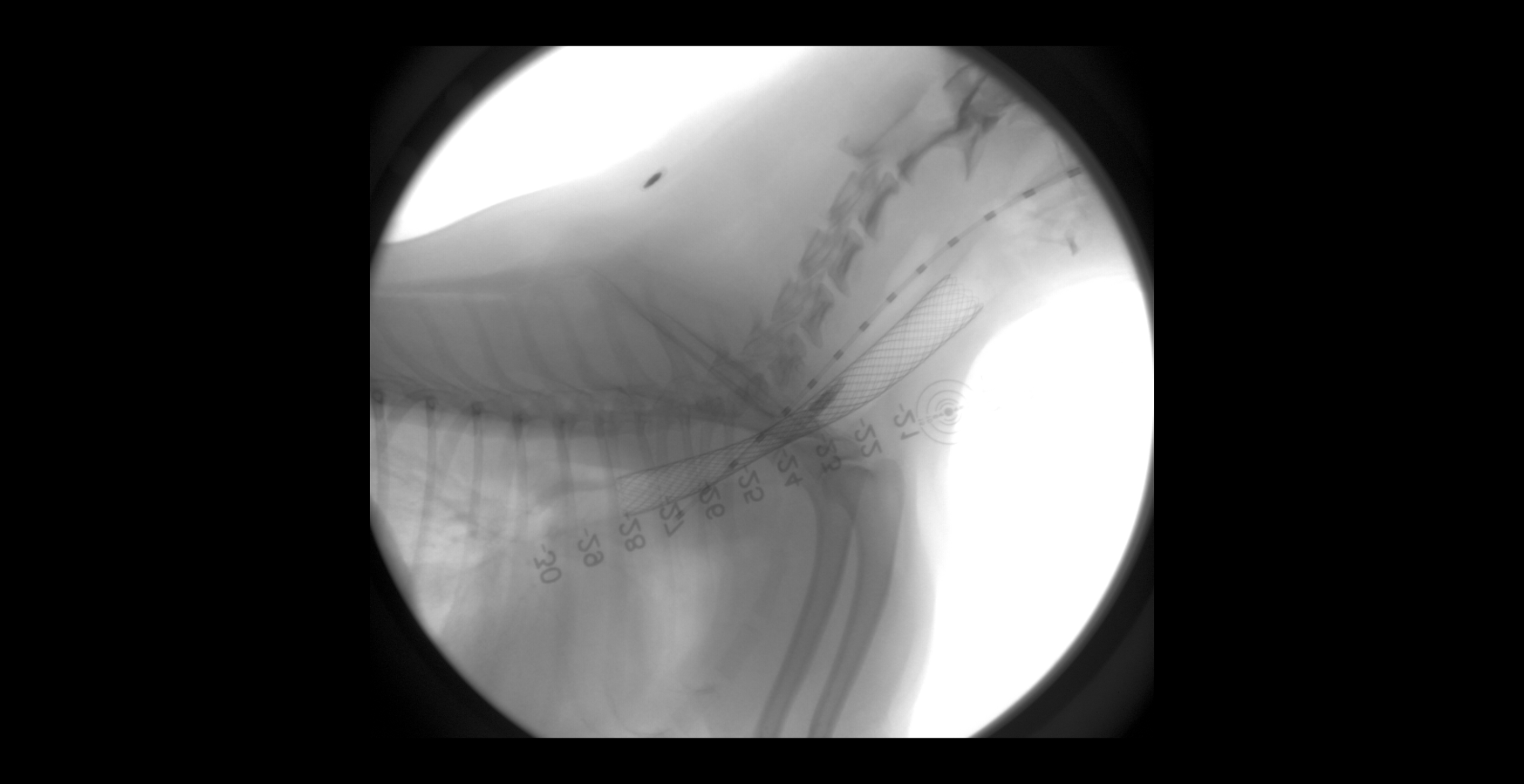Your Dog’s Procedure at MISCA
WHAT TO EXPECT
- Your dog will be placed under general anesthesia for the procedure. For more information, please visit our anesthesia and monitoring page.
- Your dog will recover in MISCA’s recovery ward with close monitoring and appropriate treatment.
- A personalized analgesic plan (plan for pain control) will be devised by your dog’s veterinary team according to diagnostic test results and procedural findings.
- You will be given detailed instructions regarding postoperative care. A trained technician will discuss the instructions with you prior to discharge.
- Although rare, your dog may benefit from transfer to a critical care facility for more intensive postoperative care. This will be discussed with you at the consultation if appropriate.
POTENTIAL COMPLICATIONS
In addition to the risk of anesthesia, your specialist(s) will discuss potential complications of the procedure at the consultation appointment. These may include any of the following:
- Hemorrhage (bleeding) – Most procedures have a low risk of bleeding, and your dog’s specialist will discuss this risk. Ask your dog’s specialist if you have any concerns about your dog having an increased risk of bleeding. Further testing or treatment may be indicated.
- Infection – Your dog will receive a preventative dose of an injectable antibiotic prior to the procedure. Additional antibiotics will be prescribed if there is a known or suspected infection. Continuation of an antibiotic is often determined by a culture taken at the time of the procedure.
YOUR DOG’S RECOVERY
- Thorough discharge instructions will be provided when you pick up your dog. A technician from your dog’s team will discuss the instructions and address any questions you may have.
- Take your dog straight home after discharge unless you need to stop and pick up prescriptions.
- Please give all medications as directed. If you have questions or concerns about the medications your dog is prescribed, contact MISCA immediately.
- Keep your dog on a leash for two weeks following surgery. This may improve healing, prevent injury and allow monitoring of eliminations.
- A pressure bandage may be on your dog’s leg in the location of the removed IV catheter. This bandage should be removed when you get home to prevent complications.
- You may feed your dog a small meal after being home for 1-2 hours. If your dog refuses to eat or vomits, please wait approximately 8-12 hours before feeding.
- Restrict your dog’s exercise to short leash walks to allow for urination and defecation only. Running, jumping and playing are prohibited for two weeks. Separation from other pets in the household may be necessary to prevent rough housing and/or trauma to an incision. Inquire about a sedative if you feel you will not be able to keep your pet’s exercise appropriately restricted.




